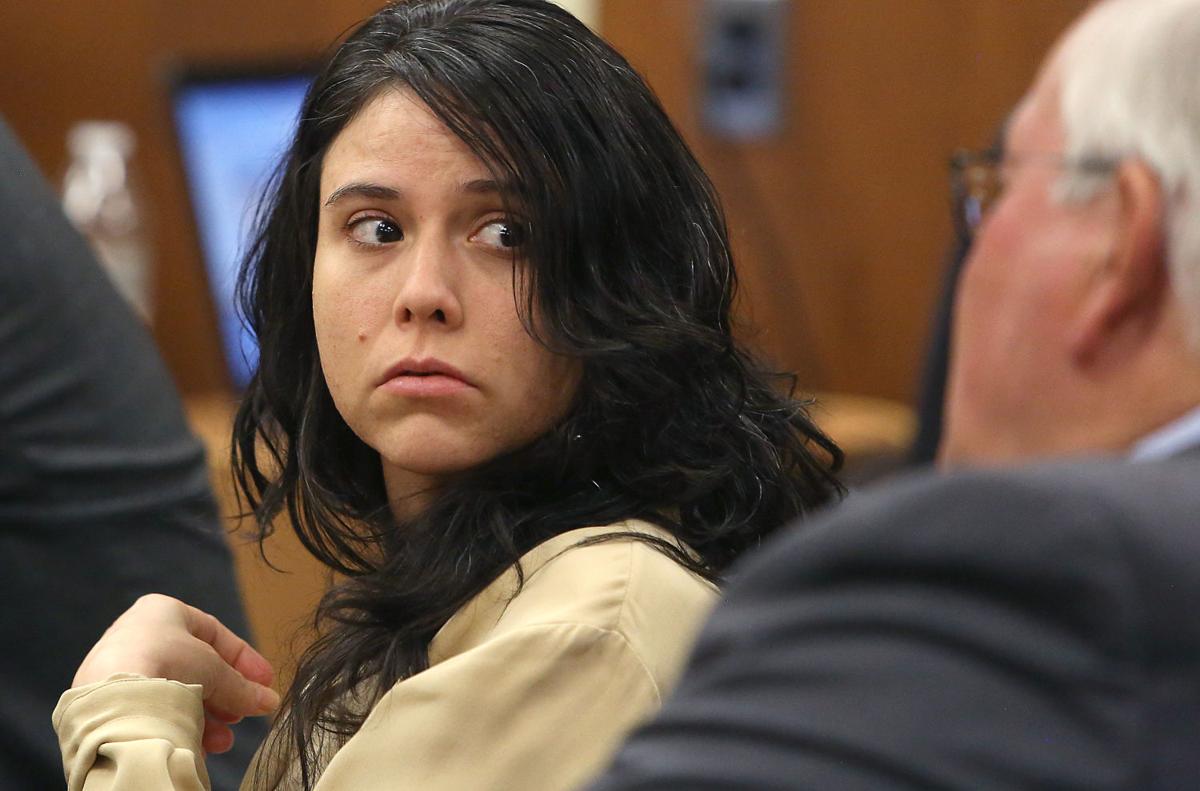PHOENIX — People who say they were forced by fear of death or injury to break the law need not prove they were in imminent danger at the time of the offense to escape being convicted, the Arizona Supreme Court ruled Friday in ordering a new trial for a Tucson woman convicted of imprisoning her children.
In a decision with significant implications, the majority said Sophia Richter should have been allowed to claim she was acting “under duress” when she and her husband kept her three daughters locked up for months in squalid conditions.
Richter never denied that the girls, ages 12, 13 and 17, were taken out of school and kept locked in a room where they were fed rancid food, given moldy water and allowed to go to the bathroom only by signaling Sophia and her husband, Fernando, the girls’ stepfather, by means of closed-circuit cameras. But Sophia argued she was too scared of her husband to help them.
Pima County Superior Court Judge Paul Tang rejected her request to present evidence that she acted under duress.
That would have included testimony from a doctor that she suffers from post-traumatic stress disorder based on “the many months, if not years of abuse suffered ... at the hands of Fernando.” Sophia also sought to present photographs of “numerous scars” she said were inflicted by him.
Tang, however, said she essentially was claiming “battered woman syndrome,” where someone gets to escape punishment by claiming she was so abused that she, in essence, lacked the mental capacity to know she was committing a crime. That defense is not allowed in Arizona.
After being found guilty of kidnapping and child abuse, she was sentenced to 20 years in prison.
But Chief Justice Scott Bales, writing for himself and three of his colleagues, said Sophia’s claims were more specific than that.
For example, he said she believed if she resisted she would either be seriously harmed or killed, or that her children would be as well. And she submitted evidence of wounds and blood on her body that police documented on the day of her arrest.
Bales said that evidence, if accepted by a jury, could show she was constantly in fear, providing a basis for her to argue she had no choice but to go along with what her husband demanded.
But Justice John Lopez, writing for himself and the other two justices, said Arizona law requires someone to show that they acted in response to a “threat or use of immediate physical force.” And he said Sophia presented no evidence that Fernando threatened or used physical harm “which compelled her to continuously abuse her children for the entire three-month period alleged in the indictment, if at all.”
Lopez also said the majority ruling opens the door for more people to claim they acted under duress — and are therefore not guilty — even though they were not under immediate threat of harm at the time of the crime.
Friday’s ruling does not mean Sophia is off the hook. Instead, it sends the case back to court for a new trial where she can present the evidence that was not allowed the first time.
Fernando, who faced the same charges plus aggravated assault, was sentenced to 58 years in prison. He lost his appeal last year.
Deputy Pima County Attorney Amelia Cramer said she was still studying the ruling. But she told Capitol Media Services last year that if the conviction were overturned, her office was prepared to put Sophia back on trial.
The case came to light in 2013 when the two younger girls escaped through the window of their bedroom and fled to a neighbor’s house, shouting that their stepfather had broken down the bedroom door and threatened them with a knife. The neighbors, who did not know the girls lived in the neighborhood, let them in and called 911.
Police found the parents inside the house and the 17-year-old locked in a separate bedroom. They also confirmed that the younger sister’s bedroom door was kicked in.
During their search they found video cameras and covered air-conditioning vents in the girls’ rooms, an internal alarm system, a knife near the master bedroom and a five-gallon bucket containing pasta mixed with meat and food scraps in the refrigerator.
The girls told police they had been removed from schools years earlier and the younger sisters had not seen their older sibling in more than a year despite living in the same house. The oldest sister said water in plastic jugs was moldy and the food they were given to eat twice daily was rancid.
“We would have to lick our plates if we wanted them clean,” she continued. “If not, my mom would just throw more food on it if I didn’t lick it.”
Bales, writing for the majority, said Sophia has a story to tell that could convince a jury she acted under duress.
“She sought to argue that her intentional illegal conduct was justified because she was compelled to abuse her children by the threat or use of immediate physical force against her or her children,” he wrote. He said that threat need not be something that occurred at the precisely the same time Sophia was committing the crime.
“An ongoing threat of harm can be sufficiently immediate and present for purposes of a duress defense even when the threat precedes the illegal conduct by several days,” he said.
Bales said, though, that for Sophia to succeed in her defense at a new trial she has to convince a jury that a reasonable person, subjected to the same threats and patterns of abuse, would have believed he or she was compelled to engage in the same illegal conduct.





